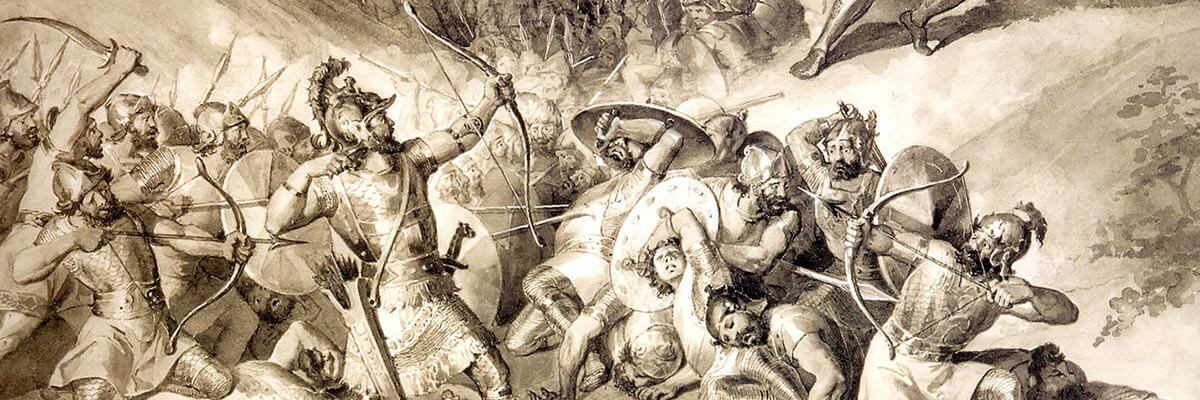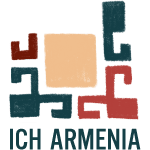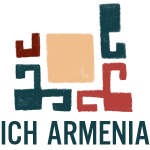
The epic folklore has two structural varieties: one type has a storyline and extensive volume, while the other is without a storyline and has an aphoristic verbal structure.
The epic folklore with thematic structure encompasses the following genres: legends, epic tales, traditional tales, epic songs, fairy tales, fables, traditional stories, daily life and superstitious tales, sometimes also humorous stories, etc.
Legends are traditional narratives about deities, they are either mythological songs (the Legend of Vahagn) or mythological tales, which are devoted to nature and natural phenomena (celestial bodies, plants, animals, etc.).
Epic tales are either about deified heroes, with narratives about ancient deities (Ara the Handsome, Shamiram, Tork Anguegh), or about Armenian forefathers, with fictitious stories about tribal deities (Hayk, Aram).
Folk legends are characterized by historicism and heroic themes – the struggle with foreign aggressors to protect the homeland and the family hearth, or the strife to defend the statehood or to restore a lost one.
“Veep’asank” is our first mythological legend dating back to primaeval times, full of historic characters of divine nature (Tigran Yervandian and Tigran the Great, Sanatrouk, Yervand, Artashes, Artavazd, Azhdahak, Argavan). They are based on real historic events dating back to the Yervandian and Artashesian dynasties.
The second traditional Armenian legend – “The Persian War” – was drawn upon the long struggle of the Armenian people with the Sassanid Persia, its characters are kings Khosrov Arshakouniats, Tiridat the Great, Khosrov Kotak, Tiran, Arshak, Pap and Varazdat, also Sparapets (Commanders-in-Chief) from the Mamikonian family: Vacheh, Vasak, Moushegh and Manvel.
The third oldest traditional Armenian legend – “The Taron War” – was derived from the historic struggle for the liberation and independence of the Taron land, led by the Mamikonian knights Moushegh, Gyle, Vahan, Sembat, Vahan Kamsarakan and Tiran.
Մեր մյուս ժողովրդական վեպը` դյուցազներգությունը, օտար զավթիչների դեմ մղած դարավոր պայքարն արտացոլող հերոսական մի ասք է` բաղկացած չորս ճյուղերից`«Սանասար և Բաղդասար», ,«Սասունցի Դավիթ», : Our other traditional legend – the epic poem of “Sasna Ts’rer”- is a heroic narrative that reflects the centuries-long struggle against foreign aggressors. It is composed of four parts: “Sanasar and Baghdasar”, “Big Mher”, “David of Sassoon” and “Little Mher”. Unlike our other traditional legends, of which only bits and bites have survived, “Sasna Ts’rer” is a unique, comprehensive literary testament of rigid structure, that is narrated by around 150 characters – a real torch bearer of our spirit and culture.
An epic song, too, contains components of the traditional legend. Here, too, we see both historic and heroic elements. But unlike “Vipasank”, our second and third traditional legends and , epic songs introduce historic and heroic elements only in passing. In addition to the well-known epic songs that have reached us (“Narekatsi”, “Levon’s Song”, “Mokats Mirza”, “Karos Khach”, “Aslan Agha”), more recent times, too, have given birth to songs about various historic events or persons or dedicated to the heroes of the Russian-Persian and Russian-Turkish wars, or the fedayeens of the national liberation movement (Arabo, Gevork Chavush, Aghbyur Serop, Andranik, Sevkaretsi Sako among them).
Fairy tales are among the oldest genres of folklore. These are targeted fictitious stories that reflect in an artistic way, through characters symbolizing the good and the evil, the popular beliefs about life, about relationships between people, about nature, or some events in social life. And the good always comes out the winner in the battle, since the good characters embody people’s sacred fantasies and desires.
Fairy tales can be tales of magic, animal tales and realistic tales.
Tales of magic date back to prehistoric times. The characters and their doings are supernatural, like, say, a flying carpet, or the worlds of Darkness and of Light, or dragons with seven heads, or the water/apple of life, etc.
Animal tales, too, are of magic, in essence. They are products of the early days of mankind, and the main characters in them are predominantly animals.
Realistic tales came to be in more recent times, their characters are human beings and their doings are close to reality. Fables are fictitious folktales of moral and instructional, or philosophical bearing. Through metaphorical use of animals, birds, plants or various objects, and their interrelations, fables expose and ridicule human shortcomings. Fables have a two-ply composition – the narrative itself, tagged with a general conclusion which conveys a moral.
Fables are grouped into several types, in accordance with the metaphorical characters involved: animals, plants, human beings, or inanimate objects.
Traditional stories belong to a folk-type that aim to communicate relevant geographical, historical, behavioural, daily life, religious, or other kinds of data and knowledge. Unlike other folklore types, they originate and exist in the same environment they relate to.
Traditional stories are grouped into the following types:
a. Etymological. These are popular etymological accounts of place names, surnames, or names of objects (why this particular lake is called Parvana, or this mountain – Masis, or this village – Malishka, or this stone – of girls’ or boys’, or this clan – the Mamikonians, etc.).
b. Explanatory. These explain the genesis of the Earth, the sky and the celestial bodies, the origins of mountains, gorges, lakes, rivers and springs, the useful and harmful properties of plants and animals, their interrelations with human beings.
c. Biographical. These offer biographical data on historic personalities (Mashtots, Narekatsi, Toumanian, Andranik, Alexander of Macedonia, Timur Lenk and others).
Daily life and superstitious tales are among popular folk genres. These are short narratives that in a colourful, vivid way relay either people’s superstitious beliefs or historic or daily life episodes.
Humorous tales, with their unexpected novella type ending, are among the most popular and viable genres of modern-day folklore. Humorous tales are created to reflect all kind of displays of human life. Structurally, they have two varieties:
a. Tales with a storyline. These are entertaining jokes, the point of which is contained in the unexpected ending, somewhat similar to novellas.
b. Tales without a storyline, made of 1 or 2 sentences. These are usually entertaining dialogues or phrasings, either in a question-answer form (this pattern underpins the famous Armenian Radio jokes series), or just an unexpected turn of phrase.
Aphoristic formulations belong to the folktales without a storyline. These are either forceful wordings used in the popular parlance (caressing, threatening, scolding), sometimes in the imperative form (curse spells, blessings, good wishes, pledges, enchanting prayers), or condensed formulations of the centuries-long experience of the people, inclined towards moralization (proverbs-maxims), or else original dictums with the aim to reveal personal abilities, or for entertainment and pastime (riddles, tongue-twisters, word plays, etc).
Witchcraft formulas make a separate group in popular aphoristic phrases:
Curse spells belong to the folklore type that aims at using the magic power of words to adversely affect people and their environment. These are expressed wishes addressed to certain people, objects, phenomena, with the aim of harming them (e.g., “May you never see man’s pants on your laundry rope”, etc).
Blessings and good wishes, too, are formulated patterns, which are meant to affect the interlocutor in a positive way. The one who utters the blessing wishes the other prosperity, power, health and proficiency (e.g., “Let your dreams come true!”, “Grow big and strong!”, etc). Do not let your foot enter the thorn. Reach your aims. Grow old on one pillow.
Pledges as aphoristic formulations, are either plain swears (e.g., “I swear on my father’s grave”, etc), or the one who pledges tries to prove his innocence by taking the curse upon himself/herself ( e.g., “I’ll be hanged if…”, etc). These, too, are wish words, in form of aphoristic patterns.
Folk prayers are one of the magical formulas of desire to change the state of a person, object or phenomenon by the power of speech to influence a person and the world around him. They are accompanied by certain rituals, called to protect man from evil forces, evil spirits that restrain his actions.
In curses, blessings, oaths, and magical prayers, as opposed to swearing, caressing, and threatening words, there is a magical effect.
Unlike swearwords or caresses or threats, curse spells, blessings, good wishes, pledges and enchanting prayers involve witchcraft. Abusive swearwords are popular aphoristic phrases that by power of words affect an individual and his/her environment, and like curses, are one of the original forms of popular punishment.
Threatening words are aimed at worsening the present status of things for the target individual or object. They can scare the interlocutor. That scare has nothing to do with the supernatural powers, its effect rather depends on the personality and mentality of the one who utters menaces (e.g., I’ll scratch your eyes out).
Caress words, in contrast to swearwords, express a wholehearted wish of the speaker to change the situation of the target person to the better (e.g., May I take your pain! ).
Proverbs-maxims reflect and express in a couple of sentences, often words even, human perceptions about various life facets, and they give prompt answers to all kinds of issues that trouble common people. These are formulated patterns of the popular parlance, forceful philosophical phrasings of generalized nature that express the centuries-long experience of the people in a nutshell, that have given people guidance, educated them and helped them better understand the man and his environment. Proverbs and maxims, in spite of their common structure and objectives, differ from each other. Proverbs are metaphorical sayings and their point is conveyed figuratively ( like “A carved stone does not go underwater”), whereas maxims do that directly ( Like “The grass is always greener on the other side”).
Riddles are among oldest folktale types that through a question-answer form offer a puzzle in an allegoric language ( Like “What goes around the house and in the house but never touches the house?/The sun?), grounded on the similarity of properties of two objects or phenomena.
Tongue-twisters, like riddles, is a medium of popular pastime with educational aims, their main characteristic is the speed of uttering the suggested text or wording in given word order and with a clear-cut articulation. Under such conditions, if the doer fails to repeat the phrasing distinctly, he/she falls into a language trap ( like “A good cook could cook as many cookies as a good cook who could cook cookies”).
Wordplays as means of pastime and entertainment are samples of folktales that are popular with children. Any suggested word (which can be either a number or a common or proper name) is followed by an unexpected funny response.


